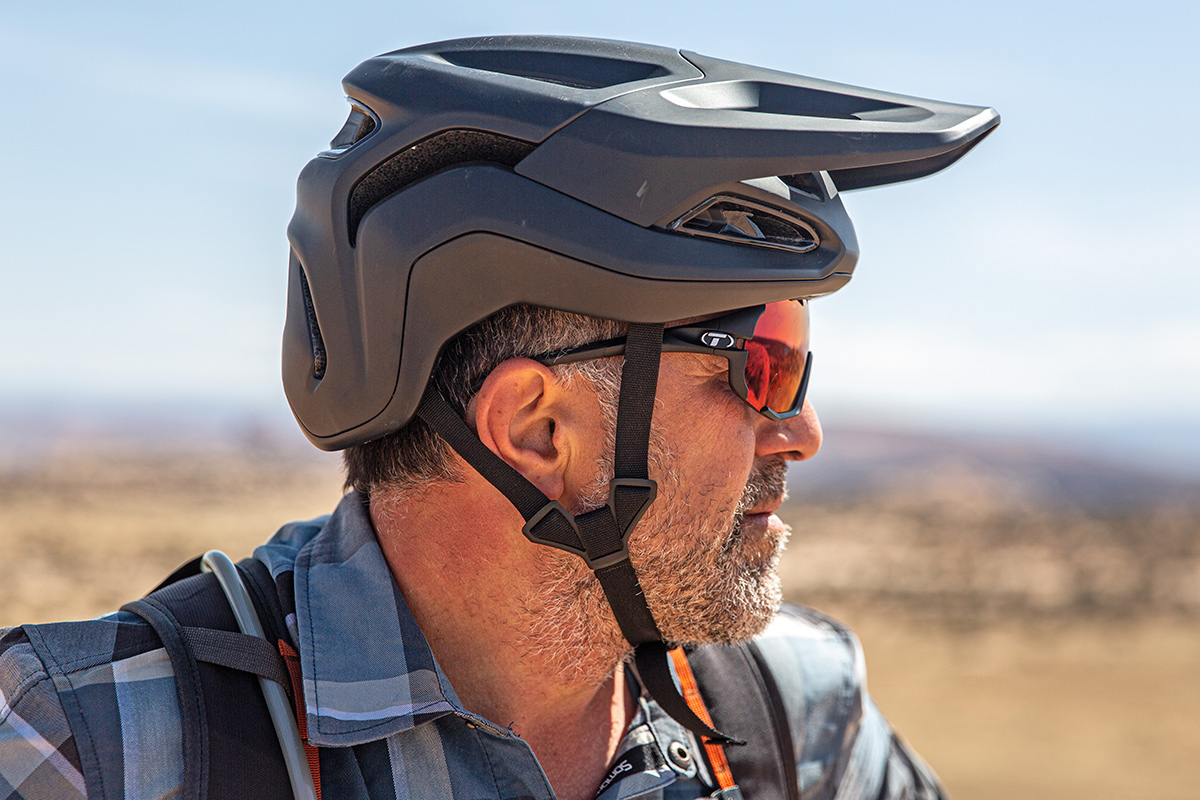
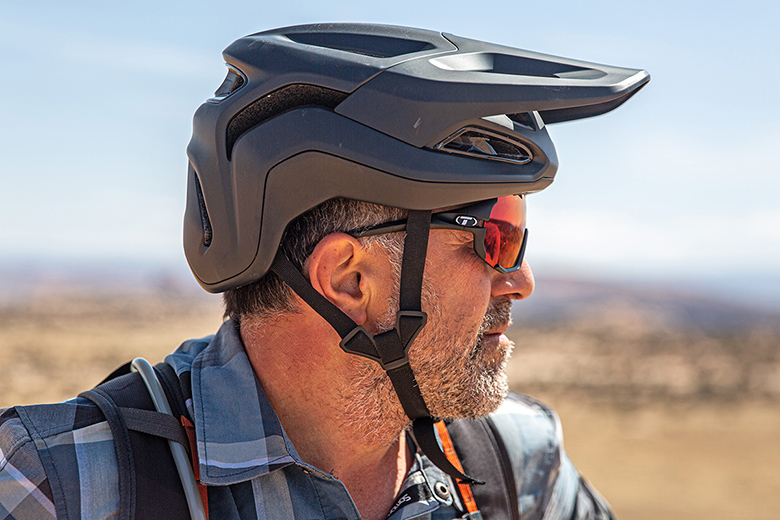
Price: $180
Weight: 13.4 oz. (size large)
Vents: 18
What we like: Comfortable fit, great adjustability, and top-notch safety rating and features.
What we don’t: Updated visor looks odd and doesn't block the sun well; not as vented as previous model.
See the Specialized Ambush 2
Specialized might be best known for their quality bikes, but we’ve had good experiences with their helmets and apparel, too. We were big fans of their original Ambush helmet, which was exceptionally lightweight and breathable and had some standout safety tech. For the latest Ambush 2, we found it's still a comfortable, protective helmet but the visor, venting, and overall shape have all been changed, and in our opinion, they are not improvements. Below we break down the Ambush 2’s overall performance. To see how it stacks up to the competition, see our article on the best mountain bike helmets.
Comfort and a great fit are two crucial features of any helmet, and while the Specialized Ambush 2 might be unrecognizable from its predecessor in other ways, thankfully it retains the comfort and fit we appreciated. The new version features more padding than last year’s model, and I’ve experienced no pressure points or rubbing. The new Ambush does sit slightly higher on my forehead and above the ears than before, but the rear coverage remains about the same and the overall fit is still excellent.
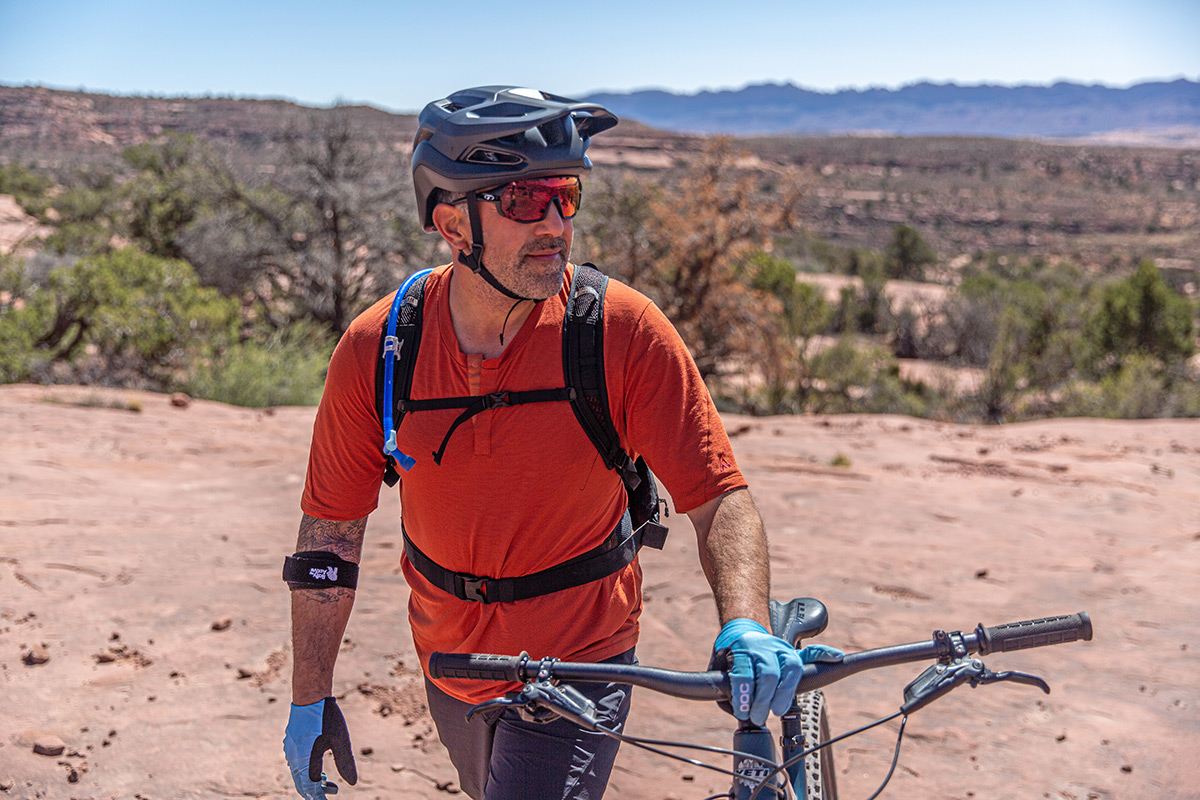
I have a fairly large head, and have trouble finding hats that fit, but a size large in the Ambush 2 worked perfectly for me. The chin strap is easy to toggle and includes a Y-shaped plastic piece (Specialized calls them adjustable Tri-Fix splitters) that helps keep the straps in place and away from my ears. The lid comfortably accommodates both the Oakley and Tifosi glasses I’ve been riding in without them pressing into the top of the helmet or putting unwanted pressure on the bridge of my nose (an issue my wife has had with many helmets including her POC Kortal Race).
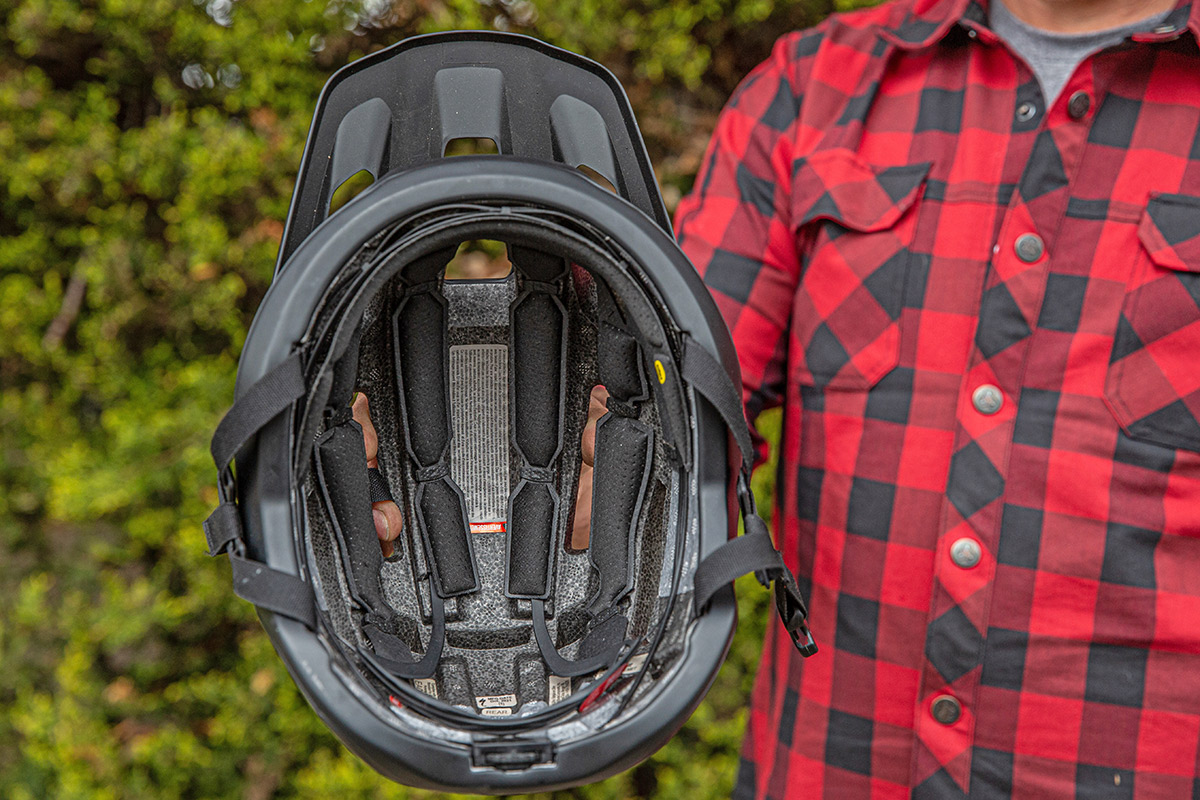
Compared to the previous version’s exceptional breathability, the new Ambush 2 is less impressive. Instead of the older model’s airy 20 vents, this year’s features 15 with an additional three on the visor. Large unvented sections on the top of the head and along the sides above the ears prevent airflow where the previous version allowed it. I’ve tested both versions in unforgiving conditions, wearing the new model for exposed, sunny rides in Moab, Utah, and Durango and Fruita, Colorado. And although the vents on the Ambush 2 are quite large, they still don’t live up to the comfort and airflow of the previous model’s smaller, more numerous, and better-placed vents. Thankfully, the Ambush 2 did retain the quick-drying liner and a Gutter Action Brow that effectively absorbs sweat. I run hot and tend to sweat a lot, so I’ve thoroughly tested these features.
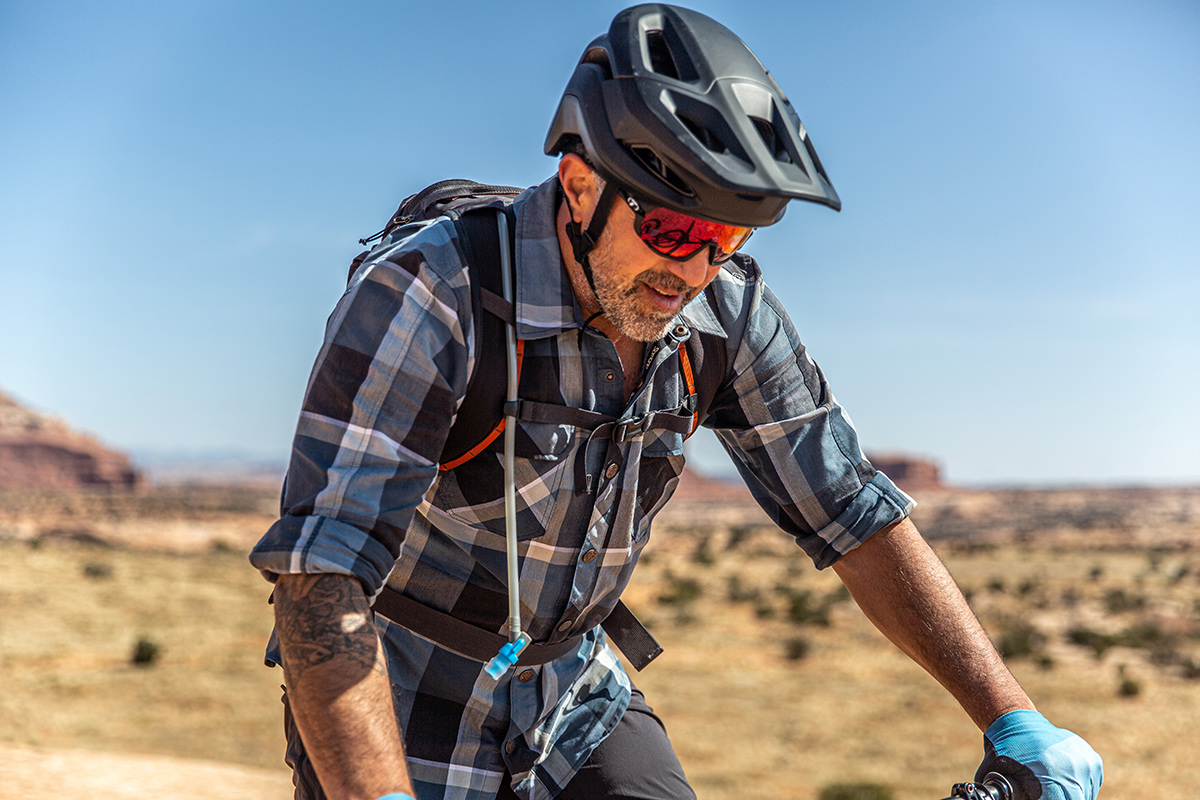
The most obvious feature of the new Ambush 2 is its unusual-looking integrated visor. The employee helping me at the local bike shop when I bought the helmet said, “I’m not sure what they did with the visor, but man this year’s Ambush is ugly.” And when he pulled the helmet out, I failed to hide my dismay and fully agreed with him. In use, I've found the new fixed visor is less functional than the adjustable visor on the previous version for keeping sun out of my eyes—it's not actually visible while I'm wearing it.
On the plus side, the visor is well designed for storing sunglasses or goggles. Rubber flaps hold the glasses in place, and I’ve had no issue with my sunglasses slipping from there on long climbs. And a final note here: The helmet also includes an occipital base adjustment, which allows you to tailor how the helmet sits on the brow. For those who ride with oversized glasses and goggles, this can be a very useful feature.
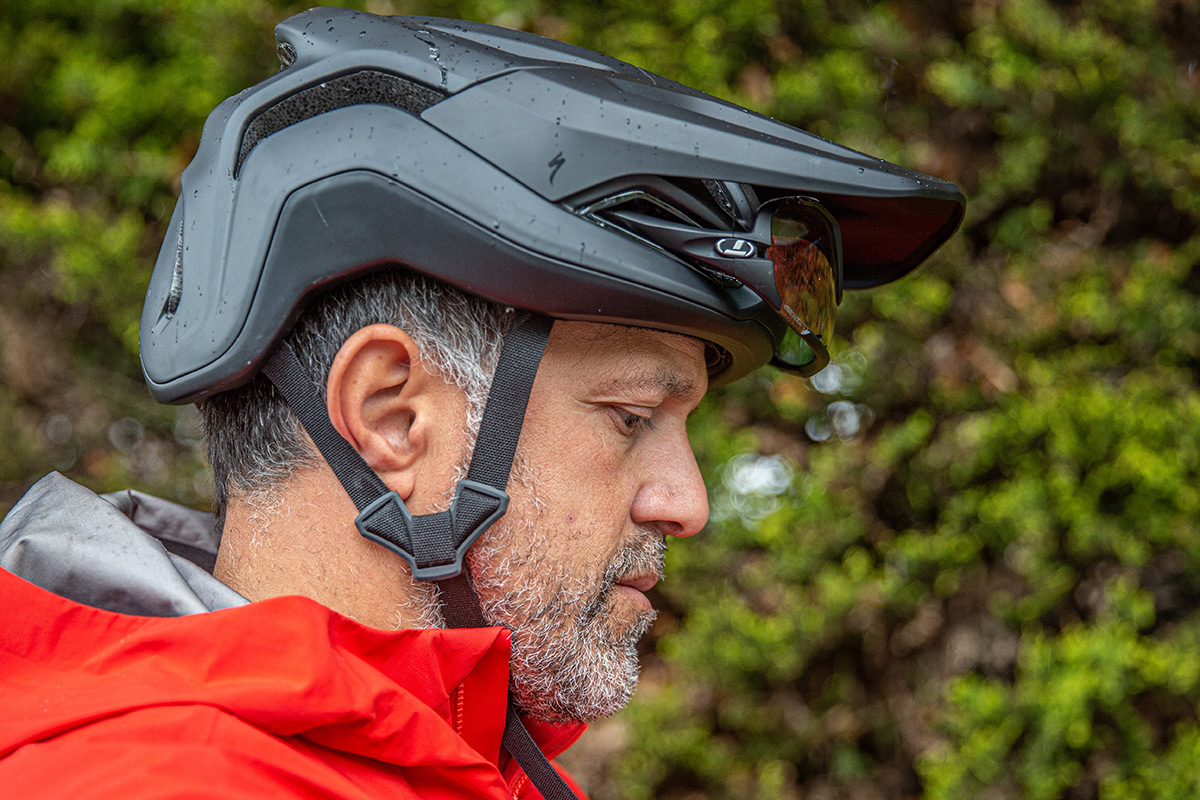
Like many high-quality mountain bike helmets, the Ambush 2 includes MIPS (Multi-Directional Impact Protection System), which is designed to reduce rotational forces on the brain during certain impacts. As with the previous model, the Ambush 2 features MIPS’ SL (“superlight”) technology, which was created exclusively for Specialized and is integrated into the helmet’s padding (standard MIPS inserts are separate pieces that sit between the shell and padding and are prone to blocking airflow) to keep the helmet lightweight and breathable.
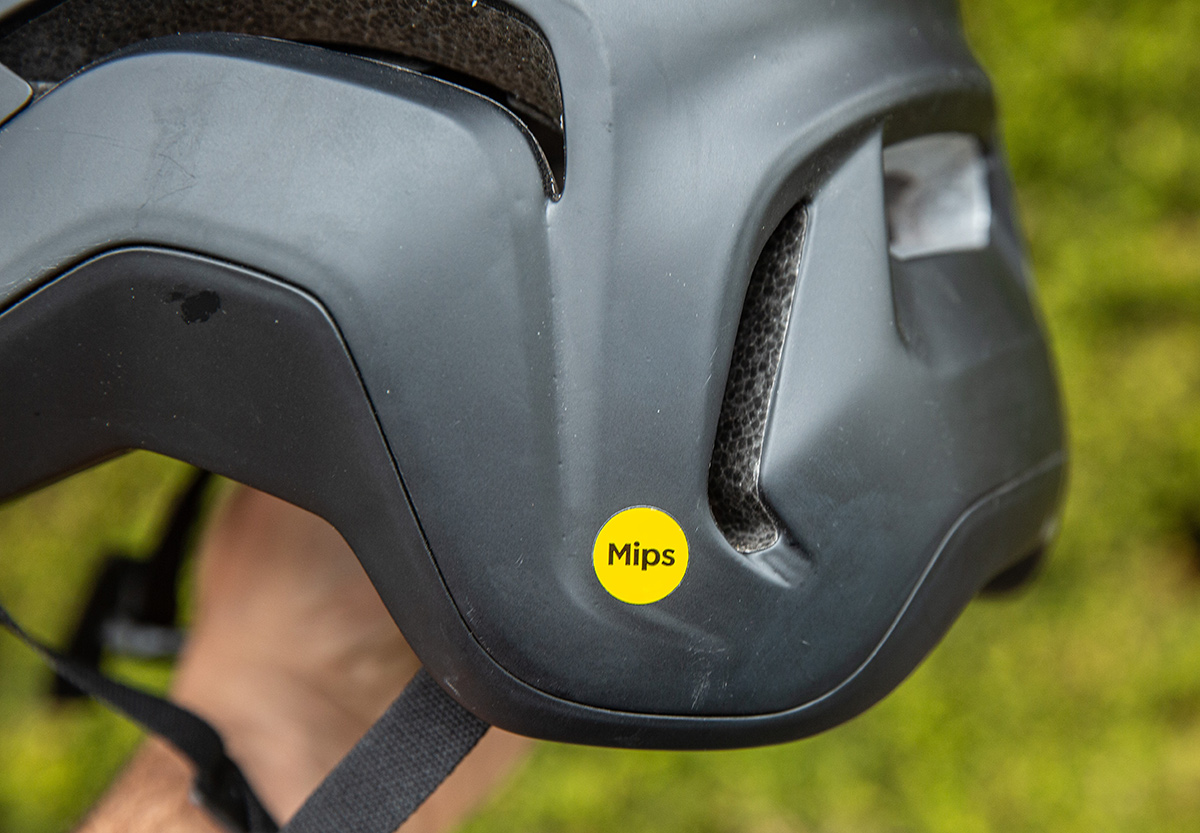
This year’s Ambush doesn’t come equipped with the ANGi crash sensor found in the previous version (which would track your ride and notify pre-set emergency contacts if it sensed sudden deceleration or rotation), but Specialized states the Ambush 2 is ANGi-ready, “with a fit system mount designed for easy integration with our ANGi crash sensor.” This must be the flat surface on the back of the helmet where a sensor could be placed (it attaches with adhesive), though the sensor itself costs $50 separately, pumping the total cost of the Ambush 2 plus ANGi sensor up to $230. It might be worth noting that no other Specialized mountain bike lids this season come with the sensor included either—only road helmets.
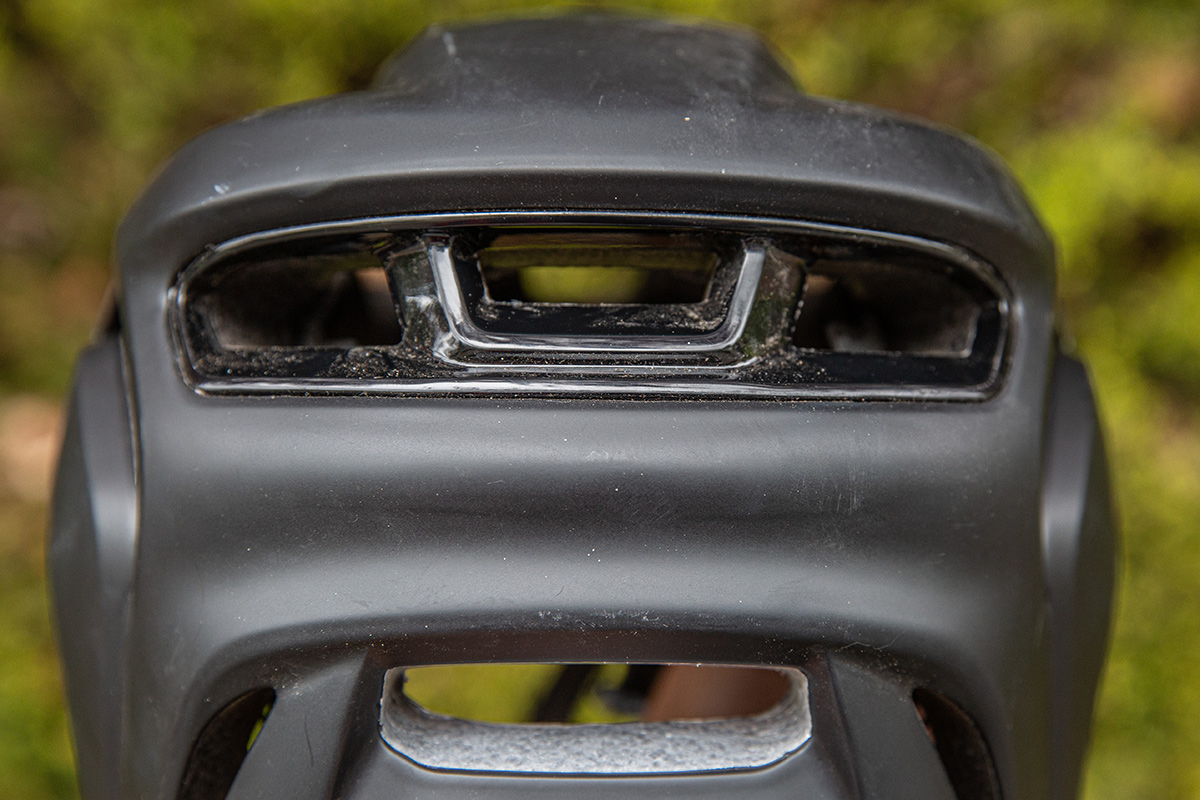
In testing the ANGi technology on the previous Ambush model, I appreciated the peace of mind it gave me, knowing if it sensed a crash it would connect to my phone via Bluetooth and sound an alarm triggering a countdown (which I could set for between 15 and 90 seconds). If I didn’t stop the countdown, the app would automatically send my coordinates to my emergency contacts. Registering on the app, connecting the device, and adding my contacts only took a few minutes. The one drawback to the system is that it requires phone signal to send any tracking info or notifications. (But if you’ll be out of service, you can always set an ETA before you head out, and if you don’t complete your ride by then, ANGi will send your last uploaded location to your contacts.) It was all so easy and unobtrusive that I’ve considered buying a separate sensor to add to my road/gravel helmet, and could see it being a worthy add-on to the Ambush 2.
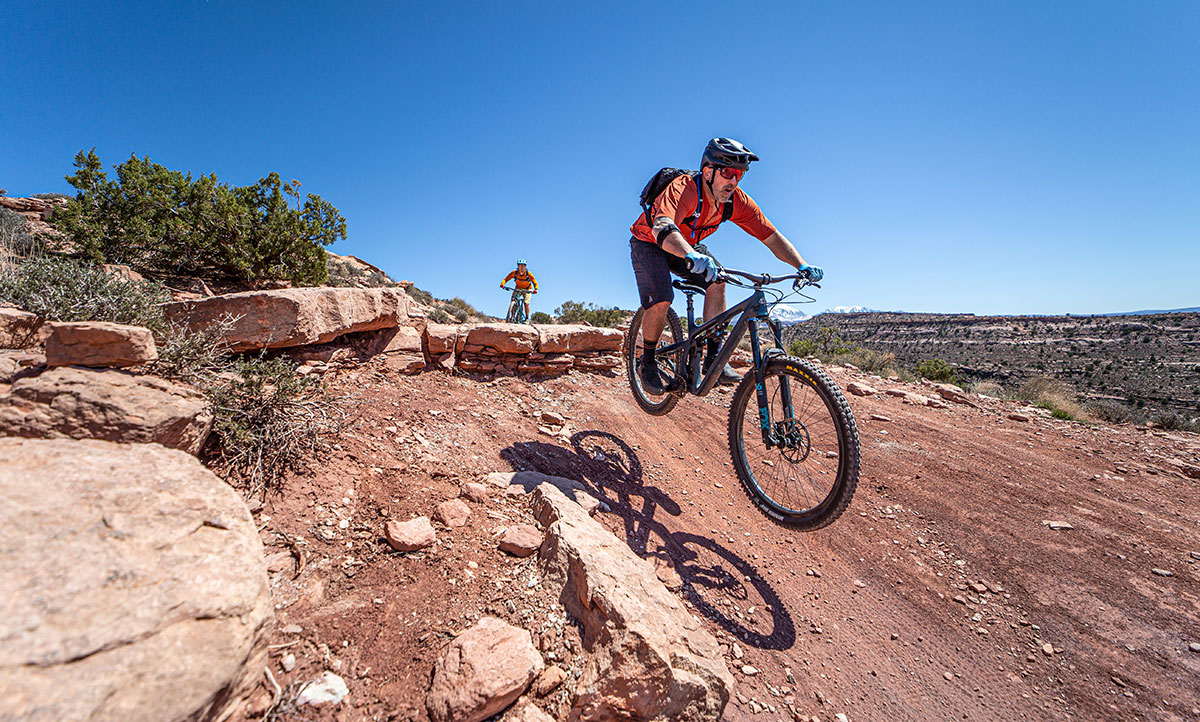
The Ambush 2 uses Specialized’s SBC Integrated Fit system which, from what I can tell, is almost identical to the Mindset 360 system I appreciated in the older model. A dial at the back of the head offers excellent micro-adjustability for tensioning the helmet with just one hand. The dial adjusts snugness throughout the whole head, as opposed to just the back and parts of the sides of the head, as in many other mountain bike helmet designs. Overall, the helmet has a deep, open shape, and five different height positions (the aforementioned "occipital base adjustment" feature) help tune the fit. Overall, the ability to customize is remarkable and the fit is comfortable and secure.
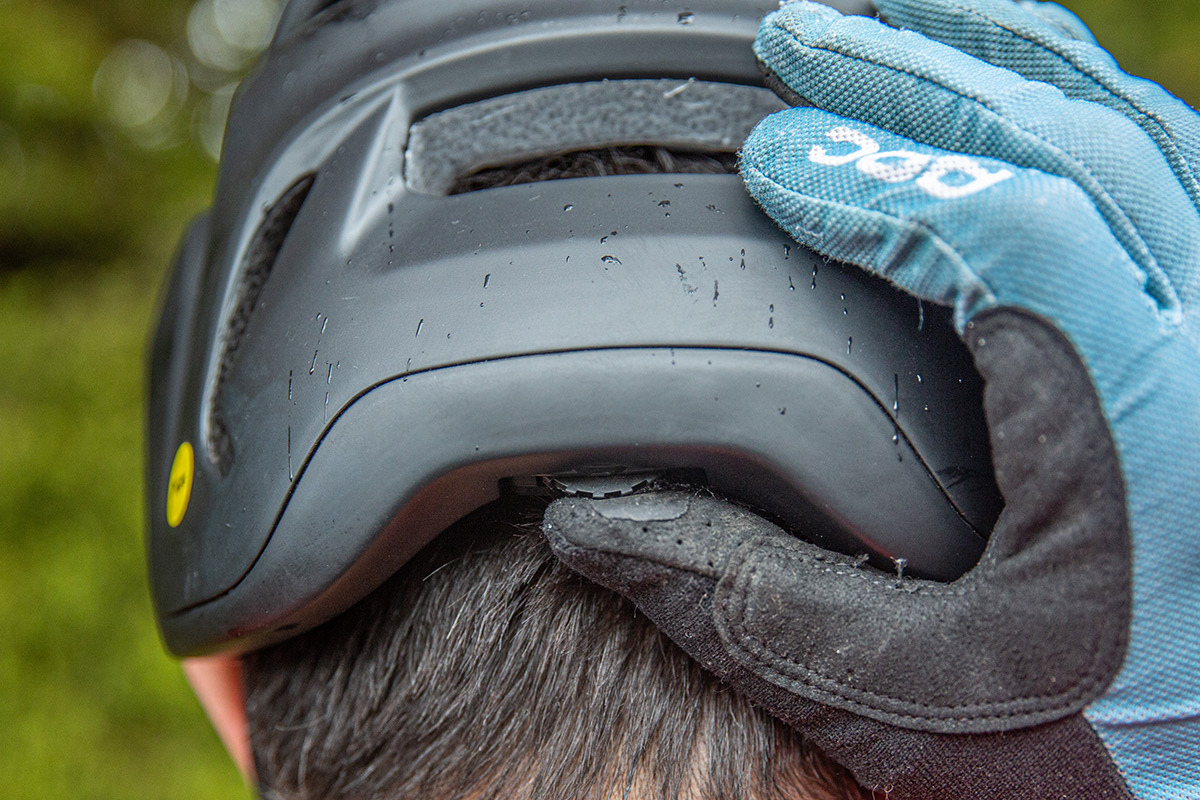
While the previous Ambush was feathery light (at 12.4 oz.—closer in weight to cross-country helmets than most others in the enduro/trail category), the Ambush 2 took the winter off and put on some additional weight, checking in at 13.4 ounces. Looking at the new design—with less venting, a larger visor, and new solid Tri-Fix splitters—it’s no surprise the helmet is heavier than its predecessor. But for reference, it’s exactly the weight of competitor Smith’s Forefront 2 helmet, and still holds its own between our other favorite trail helmets like the Giro Manifest Spherical (12.2 oz.) and Troy Lee Designs A3 (13.9 oz.). On the trail, the change is barely noticeable—the helmet is still very lightweight overall—but for that extra weight, I would like to have found additional benefits in the way of comfort, coverage, or safety.
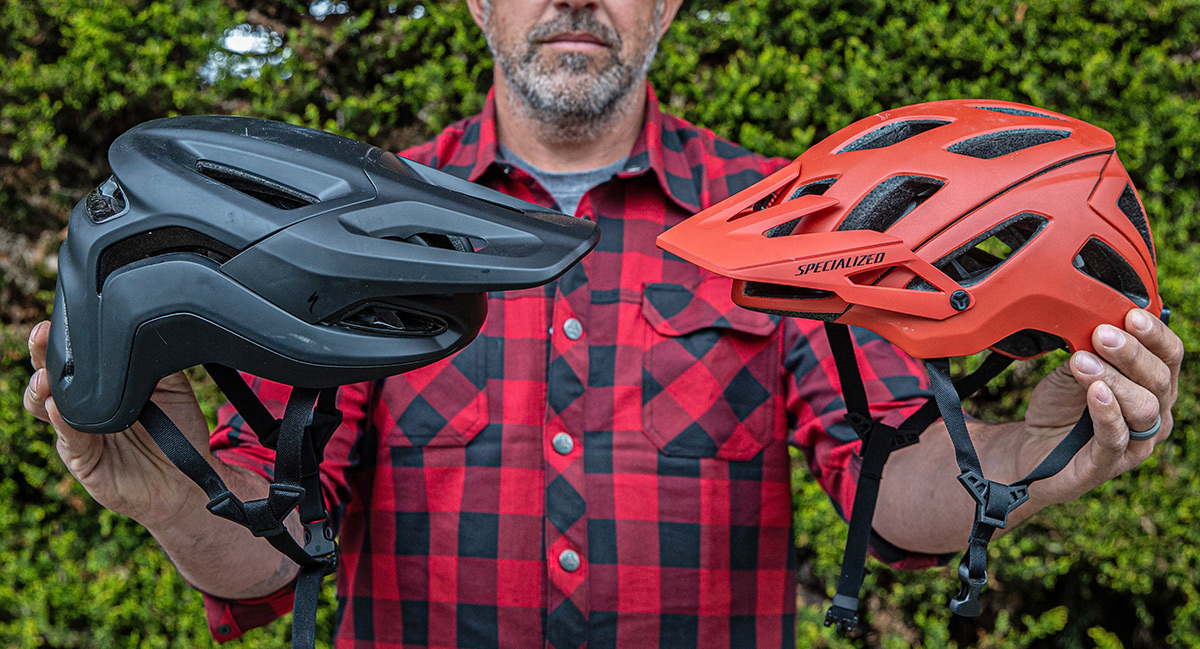
With Specialized’s reputation for quality mountain bikes and gear—and my experience with the previous version—I’m not surprised to find the Ambush 2 is holding up great after months of wear and abuse. It’s showing no signs of wear, the fit system works perfectly, and the cushioning is intact. As with the previous design, the fit dial is tucked into the helmet so that only the edge is exposed, which is nice for avoiding damage. The newly fixed visor is a breakaway design so it will pop off in the event of a crash, and the fixed attachment means there won’t be any issues with losing the visor adjustment screws (these have fallen out on other helmets I’ve worn in the past). Also of note, the Ambush 2 corrects a small issue with the previous model: A section of EPS foam along the forehead that was unprotected on the older version is now entirely protected, which is an improvement in my books.
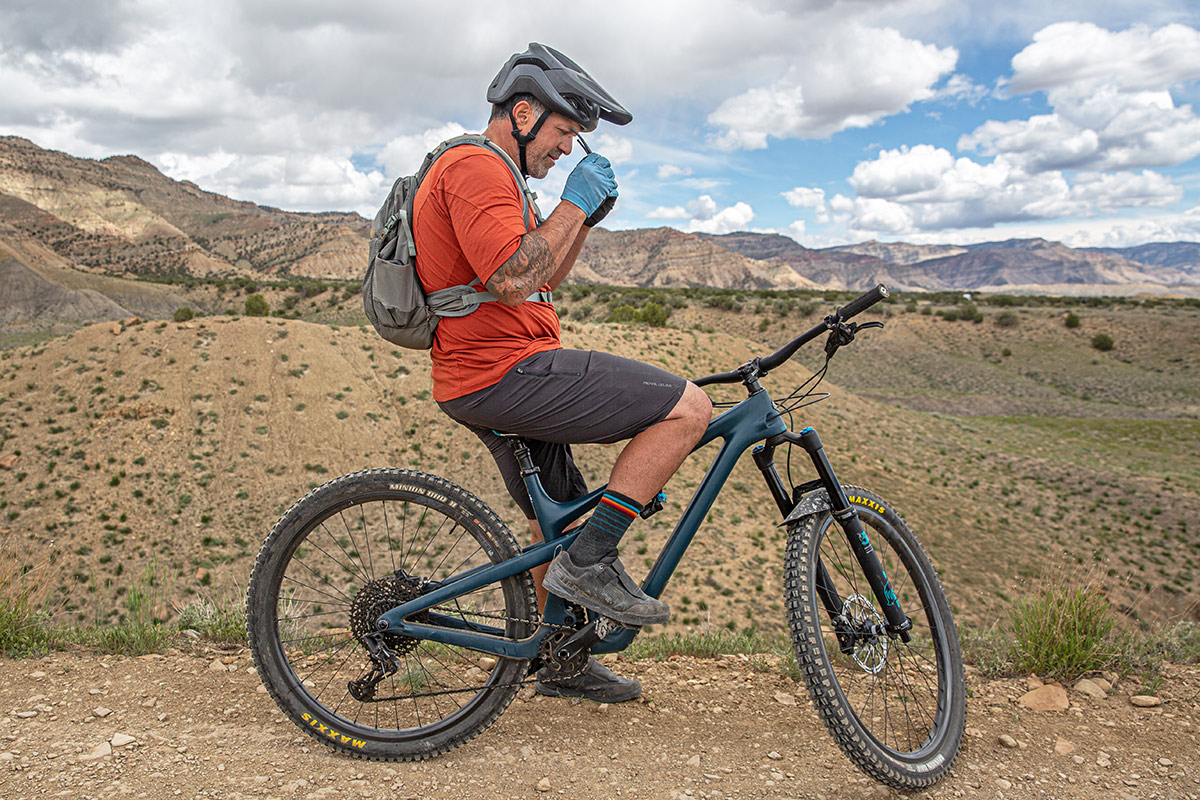
The Ambush 2 is a great choice, safety wise, earning a 5-star rating (the highest) from Virginia Polytechnic Institute and State University’s Helmet Rating system. That means it’s been independently tested for its ability to reduce linear acceleration and rotational velocity of the head from a range of impacts that might result in concussion. Based on 24 cycling-specific impact tests conducted in a lab, the Ambush 2 was ranked 10th out of 150 bike helmets Virginia Tech tested. While all helmets sold must be certified to meet minimum safety requirements, this extra testing and rating indicates the Ambush 2 offers a higher level of protection than most others on the market. Considering the helmet’s MIPS technology, overall coverage, and high STAR rating here, the Ambush 2 strikes us as a good pick for aggressive trail and all-mountain riders.
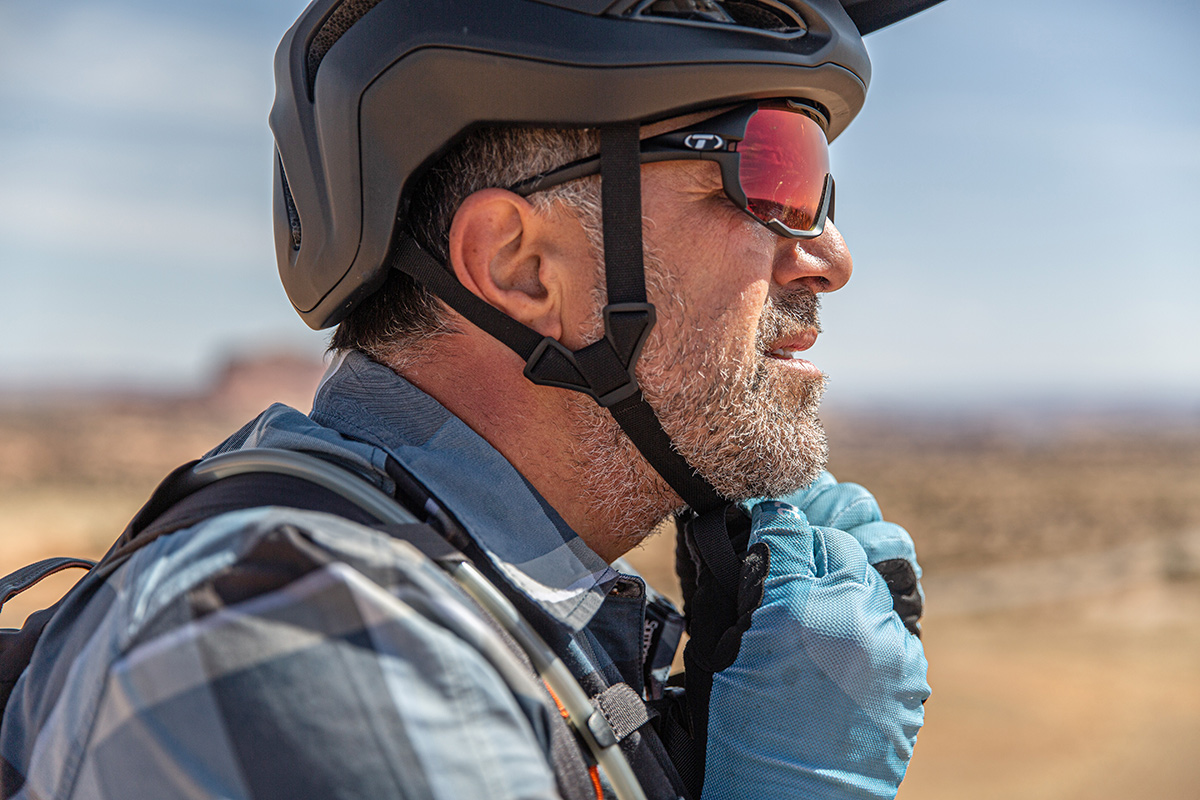
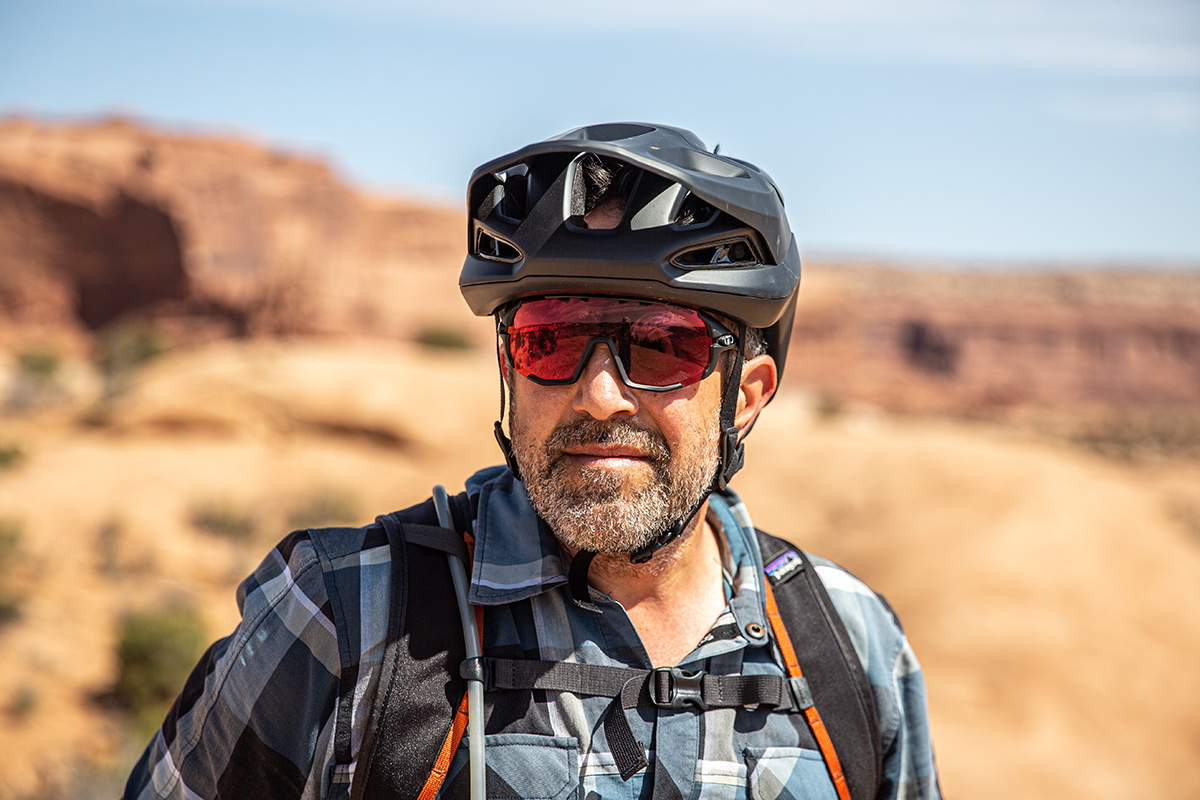
| Helmet | Price | Category | Weight | Vents | Slip Plane | Visor |
|---|---|---|---|---|---|---|
| Specialized Ambush 2 | $180 | Trail | 13.4 oz. | 18 | Yes (MIPS SL) | Fixed |
| Giro Manifest | $260 | Trail | 12.2 oz. | 19 | Yes (Spherical) | Adjustable |
| Troy Lee Designs A3 | $220 | Trail | 13.9 oz. | 16 | Yes (MIPS) | Adjustable |
| Bontrager Rally WaveCel | $160 | Trail | 14.1 oz. | 13 | Yes (WaveCel) | Adjustable |
| POC Tectal Race MIPS | $230 | Trail | 13.6 oz. | 21 | Yes (MIPS Integra) | Adjustable |
Specialized’s Ambush 2 hits a desirable mix of safety and comfort, which lands it on our list of favorite mountain bike helmets. Our current top-rated premium design is Giro’s Manifest Spherical, which beats out the Specialized in a few areas. For one, its very wide and open vents generate significantly more airflow than the Ambush, and you get some nice extras like two layers of foam (with different densities for low- and high-speed impacts) and a magnetic buckle—all at a lower weight. The $80 difference in price is certainly nothing to scoff at, but we give the slight edge to the higher-performing (and better-looking) Giro.
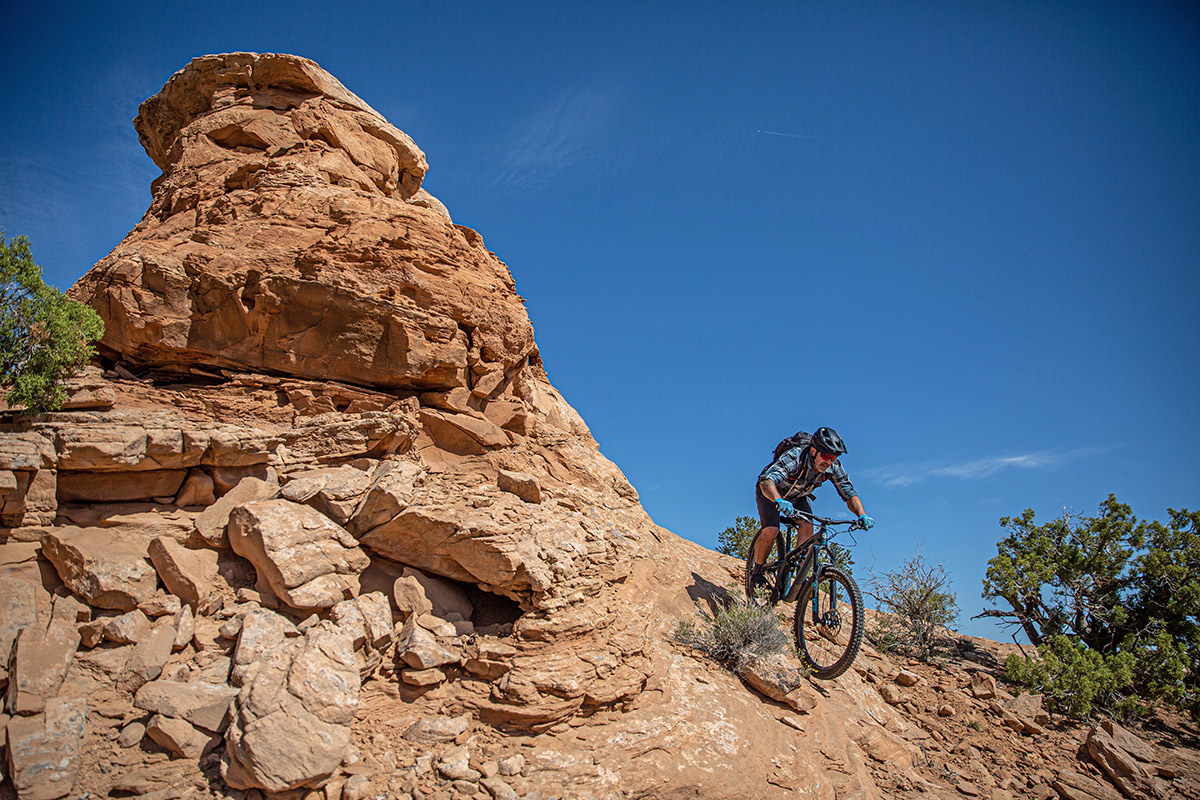
Another trail favorite is Troy Lee Designs’ A series, which is headlined by the A3 MIPS. This relatively new helmet is extremely comfortable with a wide and open interior, premium padding, and very complete coverage (slightly beating the Specialized for us here). The TLD’s smart sweat management system has impressed us with its effectiveness—it’s far less prone to dripping moisture into your eyes—and it checks some important safety boxes with a MIPS liner and dual-density foam (EPP and EPS). Finally, the high price gets you some useful spare parts, including a second set of padding and some visor screws. It’s a bit heavier, but we found it hard to tell a difference on the trail. In the end, a decision will likely come down to plush comfort (go for the A3) versus price (the Ambush wins here).
Undercutting the Ambush in price by $20 is the Bontrager Rally WaveCel. As its name indicates, you get WaveCel safey tech, which covers the interior of the lid and is designed to help with impact absorption. But while we like it in theory, it’s not as well-integrated into the shell as the MIPS SL in the Ambush 2: weight and bulk go up with the Rally, plus it’s less comfortable overall (there isn’t enough padding to create sufficient separation from the firm, cell-like material). Tack on the Specialized’s advantage in ventilation, and we think it’s well worth the added money.
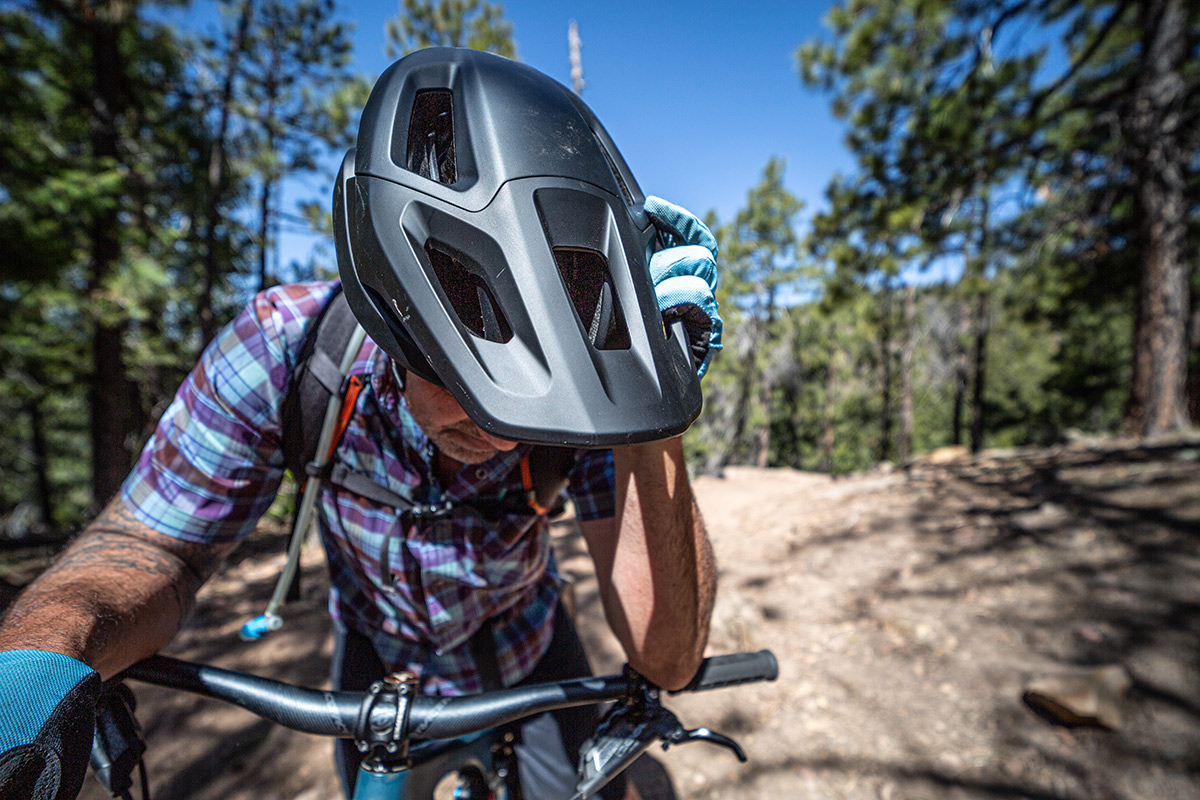
POC’s Tectal Race is our final competitor, and one that we tested alongside the Specialized here. The POC uses another smart MIPS solution—resembling their old SPIN technology—that integrates the slip plane into the connection between the padding and shell to minimize impacts on ventilation and weight. And as expected from the brand, safety is excellent with strong coverage for a half shell, a super durable construction (there’s no foam left vulnerable), and integrated RECCO reflector. That said, its shape at the front doesn’t integrate as well with glasses (although it’s less of a problem than with POC’s Kortal), and the price jump is fairly significant at $50. Both are quality options, but the POC’s more premium build does justify the added cost to us.